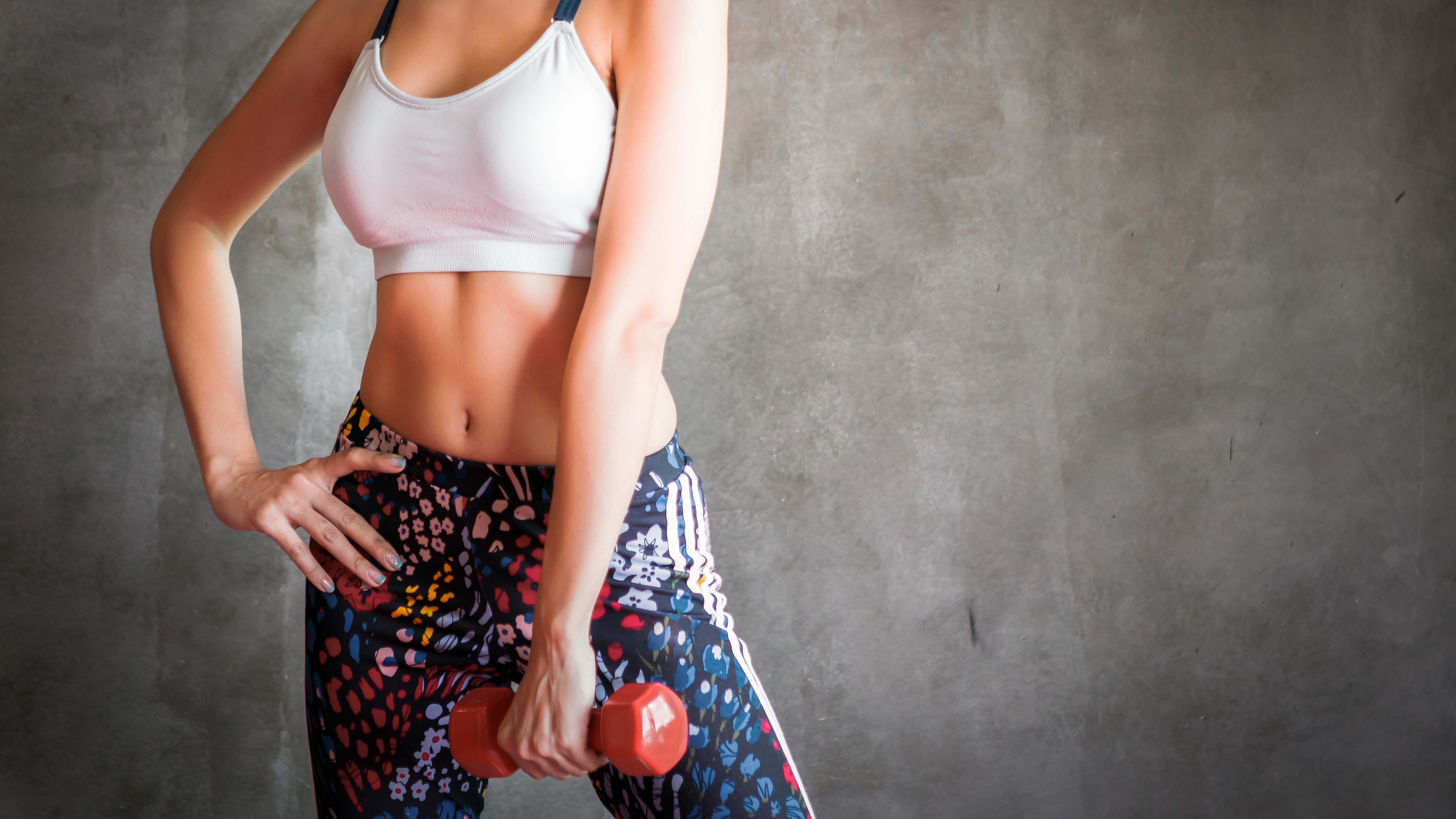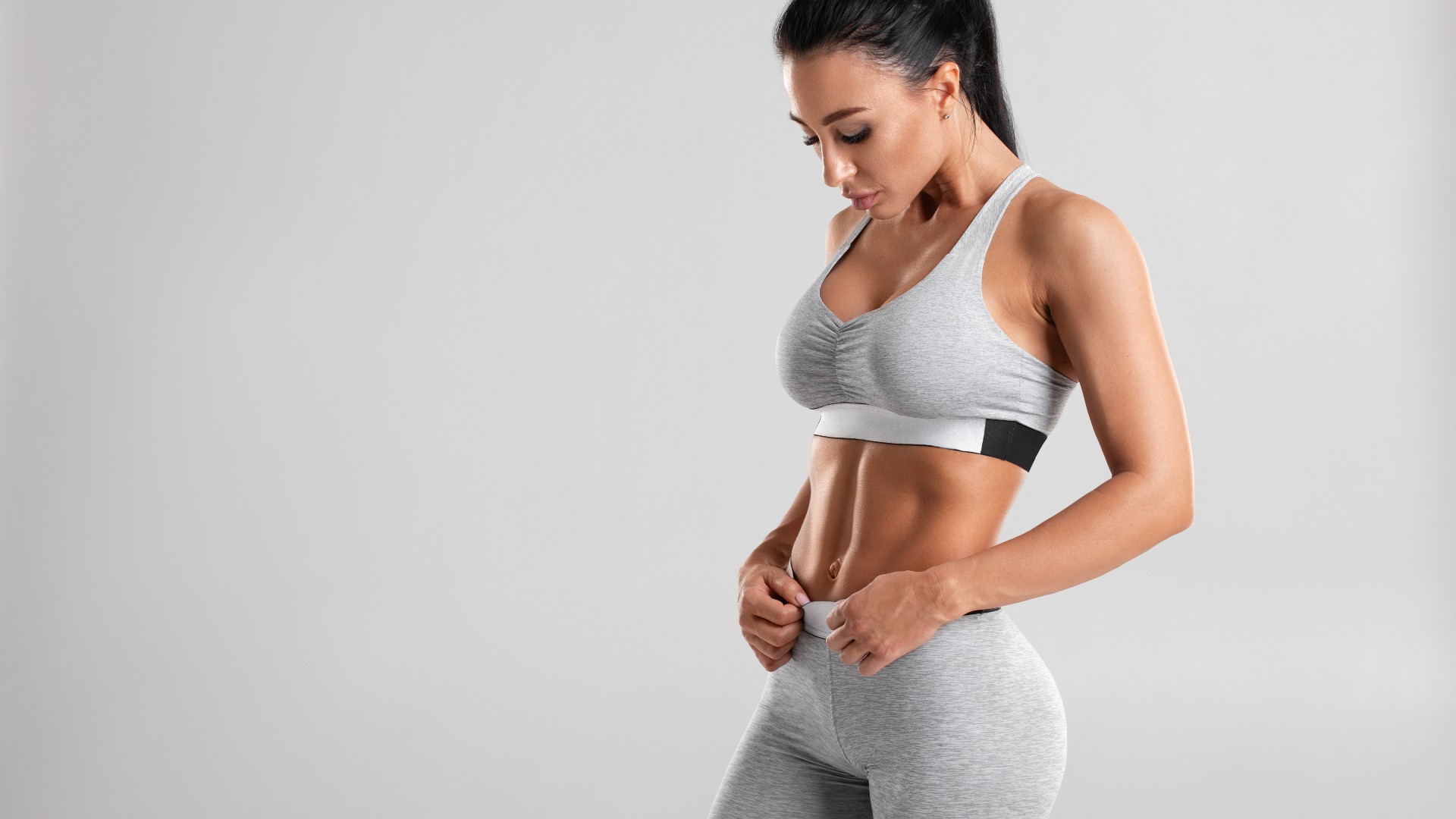Forget crunches — this beginner-friendly workout challenges your abs in 7 exercises
New to ab workouts? Here are the exercises to try

While doing a crunches workout, or holding a plank for five minutes is undoubtedly impressive, if you’re new to ab workouts, crunches and planks might not be the best way to target the muscles in your mid-section.
Strong abs are far more than just an aesthetic goal — they can help you sit and stand with better posture, protect your lower back from injury, and perform day-to-day activities, like carrying a heavy bag of shopping to your front door.
If you’re new to ab workouts, or you’re returning to exercise following an injury or pregnancy, you might want to start with standing ab exercises and exercises that target the deep core muscles you’ll need for stability. As a reminder, if you are post-natal, or recovering from a back injury, it’s a good idea to check with a medical professional before attempting a new workout.
But where should you start? This beginner-friendly ab workout, devised by Sweat app trainer, Britany Williams, helps strengthen the core using a mix of standing, weighted, and bodyweight ab exercises. “Core strength is about so much more than endless crunches and seeing how long you can hold a plank. By adding in rotation, balance, and stability work you can truly strengthen your core instead of just trying to make it look good,” she writes. Read on to find out more.
What is the workout?
The workout requires you to do 10-12 reps of each exercise, and repeat the circuit three times. All you’ll need for the workout is a set of weights — this could be some of the best adjustable dumbbells or best kettlebells, a set of weight plates, or simply a couple of heavy books or water bottles if you’re working out from home.
A post shared by Britany Williams (@britanywilliams)
A photo posted by on
Standing wood chop
Start with your feet shoulder-width apart, and hold the dumbbell in both hands to one side of the body. For example, start with the dumbbell next to your left hip. Engage your abs, and lift and rotate the dumbbell above your right shoulder. As you lift, pivot your left foot so your torso to help the elevation. This is the lift part of the movement. Next comes the chopping part. Moving with control, lower the dumbbell back to your starting position, keeping your core engaged — there should be minimal movement from the trunk during this exercise. Read what happened when our fitness editor did 100 standing wood chops a day for a week.
Around the world
This exercise works best with a kettlebell, but you can use a dumbbell if you need. Start with your feet shoulder-width apart and hold a kettlebell in both hands in front of your pelvis. Engage your core, and rotate the kettlebell around your body, swapping which hand is holding the kettlebell as it moves around your waist. Keep your torso still, and your core braced throughout the movement.
Sign up to get the BEST of Tom's Guide direct to your inbox.
Get instant access to breaking news, the hottest reviews, great deals and helpful tips.
Farmers carry
To do this exercise, start by standing with your feet hip-width apart and two kettlebells placed on either side of your feet. Bend your knees and lower into a squat, keep your chest lifted and the weight evenly distributed across your feet. Look ahead. Grip both kettlebells, engage your core and set your shoulders back and down. Push through your heels to stand. Begin walking without leaning forward, backward or over to one side. Here’s more on how to do the farmer’s walk with perfect form.
Standing twist
This exercise is a standing exercise of a bicycle crunch. The key here is moving slowly, and with control. Start by standing with your feet shoulder-width apart, and your hands behind your temples. Engage your core, and lift one knee up towards your chest, keeping a 90-degree bend in the knee. At the same time, twist your torso, dropping your elbow towards the opposite knee (it doesn’t matter if they don’t actually touch). Reverse the movement to return to your starting position, and repeat on the opposite side.
Single-leg Romanian Deadlift with balance
For this exercise, you might want to use a chair, or a wall for balance. Start standing with your legs shoulder-width apart, and bend one leg up towards your chest, keeping a 90-degree angle in your knee. Holding the chair or wall with the opposite side, hinge forwards, and take your leg back and behind your body, keeping the bend in your knee. Without letting your foot return to the floor or your leg move out of the 90-degree angle, straighten back to your starting position. Perform all your reps on one leg before switching sides.
Thread the needle
Starting in a side plank position, with your bottom knee resting on the floor, your hips stacked, and your elbow in line with your shoulder, lift your upper arm up towards the ceiling. Engage your core to hold here, before rotating your torso and threading your arm underneath your trunk, before reversing the movement to return to the side-plank. Perform all your reps before switching sides.
Heel taps
Finally, lie down on your exercise mat, ensuring that your lower back is pressed into the mat. Raise your head and neck off the floor, supporting your neck with your hands if you need to, and raise your legs into a tabletop position. From here, engage your core and drop both heels down to the floor, then bring them back to a tabletop position, moving slowly and with control throughout.
What are the benefits?

While crunches and planks do target your abdominal muscles, exercises like the ones used in this workout help you build functional strength — in other words, strengthening the muscle groups you use during day-to-day activities, like lifting a bag of shopping, or reaching to put something back on a shelf. Functional workouts are (one of) the best ways to build full-body strength, muscle mass, and power, and a wealth of research backs it up. Incorporating functional moves into your exercise regime could also improve coordination, balance, and mobility, which should help you improve how you move during daily activities.
At the same time, your core is working hard during all of these exercises. During standing ab workouts, as you are standing, you are working on your balance, coordination, and stability more than you would be lying down. You’re also more likely to recruit other muscle groups and are great if you’re short on space. Standing ab exercises can also help you to build power — especially exercises like wood chops and medicine ball slams.
More from Tom's Guide

Jane McGuire is Tom's Guide's Fitness editor, which means she looks after everything fitness related - from running gear to yoga mats. An avid runner, Jane has tested and reviewed fitness products for the past five years, so knows what to look for when finding a good running watch or a pair of shorts with pockets big enough for your smartphone. When she's not pounding the pavements, you'll find Jane striding round the Surrey Hills, taking far too many photos of her puppy.
